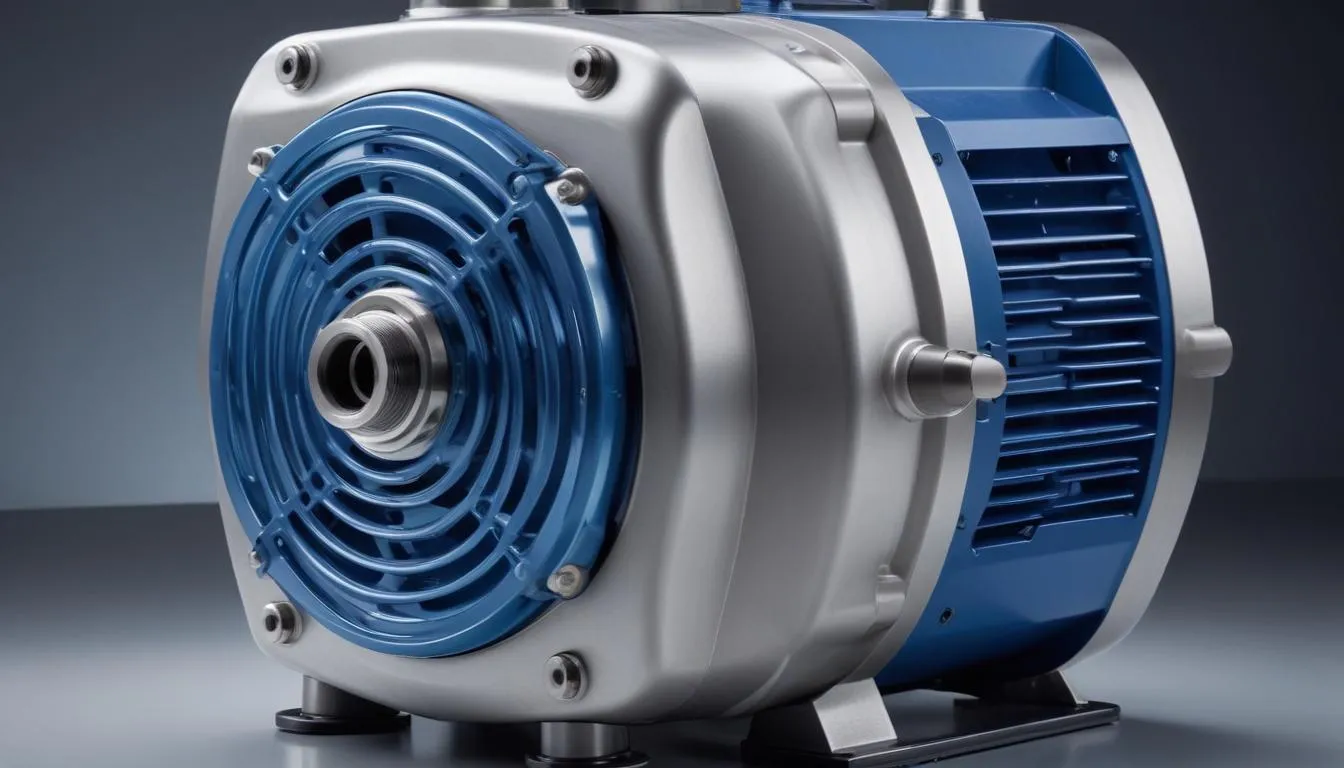 A vane pump is a positive displacement pump that uses the action of a series of vanes to move fluids. Typically constructed with a rotor and a stator, the design allows for a chamber where the vanes slide in and out, creating varying volumes that facilitate the pumping action. As the rotor turns, centrifugal force pushes the vanes outward into contact with the pump casing, forming pockets that trap and transport the fluid from the inlet to the outlet.
A vane pump is a positive displacement pump that uses the action of a series of vanes to move fluids. Typically constructed with a rotor and a stator, the design allows for a chamber where the vanes slide in and out, creating varying volumes that facilitate the pumping action. As the rotor turns, centrifugal force pushes the vanes outward into contact with the pump casing, forming pockets that trap and transport the fluid from the inlet to the outlet.
The construction of a vane pump is relatively straightforward, making it suitable for various applications. These pumps can be classified into two main types: fixed displacement and variable displacement, each offering different operational benefits depending on the application needs.
Fixed displacement vane pumps maintain a constant flow rate regardless of the operating pressure, while variable displacement vane pumps can adjust their flow rates by changing the angle of the vanes during operation, thus allowing for greater flexibility in fluid management.
In essence, the efficiency of a vane pump hinges on its ability to create a constant flow of fluid with minimal pulsation, making it suitable for situations where smooth and steady output is critical. This makes vane pumps particularly effective in applications requiring consistent pressure and flow, notably in hydraulic systems, fuel delivery, and various industrial processes.
Advantages and Disadvantages
The selection of vane pumps for a particular application is influenced by their unique advantages and inherent disadvantages, which should be carefully considered by engineers and designers.
One of the primary advantages of vane pumps is their efficiency. Vane pumps generally exhibit higher efficiency levels than many other types of positive displacement pumps. This efficiency is largely due to the design, which allows for smooth operation and reduced turbulence, resulting in lower energy consumption while maintaining performance.
Another notable advantage is self-priming capability. Vane pumps can handle both low viscosity liquids and those with slightly higher viscous properties, which makes them versatile in a range of applications. Additionally, many vane pumps are designed to be self-priming, allowing them to efficiently move fluids without requiring an external source to initiate flow.
Moreover, low maintenance requirements also make vane pumps appealing. Their relatively simple design means that they contain fewer moving parts compared to other pump types, reducing wear and the likelihood of mechanical failure. With appropriate material selection and design, vane pumps can also provide a long operational life before requiring significant maintenance or replacement.
However, despite these advantages, vane pumps do have some disadvantages. One of the most critical drawbacks is their limited pressure capabilities. Vane pumps generally operate effectively at lower pressures, making them unsuitable for high-pressure applications where other pump types, such as gear or piston pumps, may be more appropriate. When subjected to excessive pressure, the vanes can become damaged or fail, leading to ineffective operation.
Another disadvantage is their susceptibility to shear-sensitive fluids. If a vane pump is used with highly viscous or shear-sensitive materials, it may cause changes in the fluid properties, resulting in degradation or other unwanted outcomes. This necessitates careful consideration of the fluid characteristics when selecting a vane pump for a specific application.
Furthermore, vane pumps can experience cavitation if not installed correctly or if the inlet conditions are unsuitable. Cavitation can result in pitting on the vanes or wear on the pump casing, which can significantly reduce efficiency and lifespan.
In summary, while vane pumps provide notable advantages such as efficiency, self-priming capabilities, and low maintenance needs, they also present challenges regarding pressure limits, fluid compatibility, and potential cavitation. Making informed choices based on these factors can help in achieving optimal performance in various applications.
Applications of Vane Pumps
 Vane pumps are widely employed across a variety of industries due to their versatility and ability to handle different types of fluids. The following highlights some key applications where vane pumps are particularly effective:
Vane pumps are widely employed across a variety of industries due to their versatility and ability to handle different types of fluids. The following highlights some key applications where vane pumps are particularly effective:
- Hydraulic Systems: Vane pumps are commonly used in hydraulic systems where they provide power for machinery and equipment. Their ability to maintain a steady flow and pressure makes them ideal for applications such as construction equipment, automotive systems, and industrial machinery.
- Fuel Delivery: In the automotive and aviation sectors, vane pumps facilitate fuel delivery. They are often found in fuel injection systems, providing consistent fuel flow to engines, which is critical for performance and efficiency. Their self-priming capabilities enable their use in various engine configurations.
- Chemical Processing: Vane pumps are utilized in chemical processing plants for transferring different types of liquids, including oils, solvents, and other chemicals. Their ability to handle a range of viscosities and their chemical compatibility (depending on the materials used in construction) make them a popular choice for applications requiring stable flow rates.
- Food and Beverage Industry: In the food and beverage sector, vane pumps are employed for the transfer and processing of products such as syrups, oils, and juices. Their design allows for gentle handling of shear-sensitive products, minimizing the risk of degrading textures and flavors.
- Aerospace: Vane pumps find applications in the aerospace industry, particularly in hydraulic systems that control aircraft operations. Their reliability and efficiency in maintaining hydraulic pressure are critical for safety and performance.
- Wastewater Treatment: In wastewater treatment facilities, vane pumps are often used to relay sludge and other fluids through various stages of treatment. Their capability to handle viscous and mixed fluids makes them suitable for this challenging environment.
The use of vane pumps in these diverse applications underscores their flexibility and effectiveness. Their ability to provide consistent flow, manage various fluid types, and operate efficiently under specific conditions makes them a valuable choice across multiple sectors. As industries continue to evolve, the demand for reliable and efficient fluid handling solutions will further reinforce the role of vane pumps in supporting operational needs.